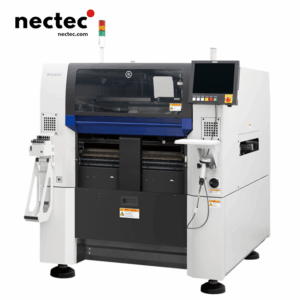In the ever-evolving landscape of manufacturing, China has consistently stood at the forefront, showcasing remarkable innovation and efficiency. One of the key technological advancements that has substantially transformed production lines in China is the automatic pick and place machine. These machines have become indispensable in various sectors, ranging from electronics to automotive, significantly improving productivity and reducing labor costs. In this article, we will delve into the functionalities, benefits, and future prospects of automatic pick and place machines in China.
Ce sunt mașinile automate Pick and Place?
Automatic pick and place machines are sophisticated robotic systems designed to handle the loading and unloading of items onto production lines. They utilize automated systems to “pick” a product from one location and “place” it in another, ensuring high precision and speed during production processes. Generally equipped with advanced vision systems, these machines can accurately identify and manipulate various components, making them essential for assembly lines.
Functionalities that Drive Efficiency
The efficiency of automatic pick and place machines stems from several key functionalities:
- Viteză mare: These machines can operate at incredible speeds, accomplishing tasks that would take human workers considerably longer.
- Manipulare de precizie: Equipped with advanced sensors and cameras, they handle delicate items with precision, minimizing the risk of damage.
- Adaptabilitate: Modern pick and place machines can be easily programmed to adapt to various assembly tasks, making them versatile additions to any production line.
- Integrarea cu IoT: Many machines now feature Internet of Things (IoT) capabilities, allowing manufacturers to monitor performance and make real-time adjustments and maintenance predictions.
Driving Factors Behind Adoption in China
The adoption of automatic pick and place machines in China can be attributed to several driving factors:
- Lipsa forței de muncă: As the Chinese economy continues to industrialize, the demand for labor has increasingly outstripped supply, pushing manufacturers to adopt automation to stay competitive.
- Creșterea costurilor forței de muncă: Increased wages in China have made the cost of manual labor more prohibitive, prompting businesses to turn to automation for economic efficiency.
- Sprijin guvernamental: The Chinese government has actively encouraged the use of automation through subsidies, grants, and favorable policies aimed at enhancing technological adoption.
Industrii care beneficiază de mașini automate de preluare și plasare
Various industries in China are reaping the benefits of implementing automatic pick and place machines:
1. Fabricarea produselor electronice
In the electronics sector, where precision and speed are paramount, automatic pick and place machines are utilized for assembling circuit boards and managing component placements. These machines handle tiny components with ease, ensuring each part is flawlessly positioned for optimal functionality.
2. Industria auto
The automotive industry is another key sector capitalizing on this technology. Automatic pick and place machines streamline various assembly tasks, from engine assembly to interior fitting, improving production timelines and enhancing overall vehicle quality.
3. Ambalare
In packaging, these machines facilitate the sorting and placing of products into packaging containers, ensuring efficient handling and reducing the risk of packaging errors. This capability has become critical in meeting increased consumer demand for faster delivery times.
The Economic Impact of Automation
The adoption of automatic pick and place machines has significant implications for the Chinese economy. By enhancing the efficiency of production lines, businesses can achieve higher output levels with fewer workers, freeing up labor for more skilled positions and innovative roles. Furthermore, the reduction of waste and enhanced product quality translate into positive economic outcomes for industries adopting these machines.
Provocări și limitări
While the benefits of automatic pick and place machines are clear, the transition to automated systems comes with challenges:
- Investiție inițială: The cost of purchasing and installing these machines can be substantial, posing a barrier to entry for smaller manufacturers.
- Deficitul de competențe: Implementing automation requires a workforce skilled in programming and maintaining these systems, necessitating training and education investments.
- Technical Maintenance: While automation reduces reliance on manual labor, ongoing technical maintenance and system upgrades are required to keep machines functioning optimally.
The Future of Automatic Pick and Place Technology in China
The future of automatic pick and place technology in China looks promising, with ongoing advancements. Emerging trends point towards greater integration with artificial intelligence (AI) and machine learning, enabling machines to learn and adapt to new tasks without requiring extensive reprogramming. Additionally, as Industry 4.0 continues to gain traction, fully automated smart factories are likely to become more commonplace, with pick and place machines playing a central role in their operation.
Concluzie
As China’s manufacturing landscape continues to evolve, the importance of automation and efficiency cannot be overstated. Automatic pick and place machines epitomize these advancements, serving as vital tools that drive production, enhance quality, and contribute to the overall economic growth of the region.






